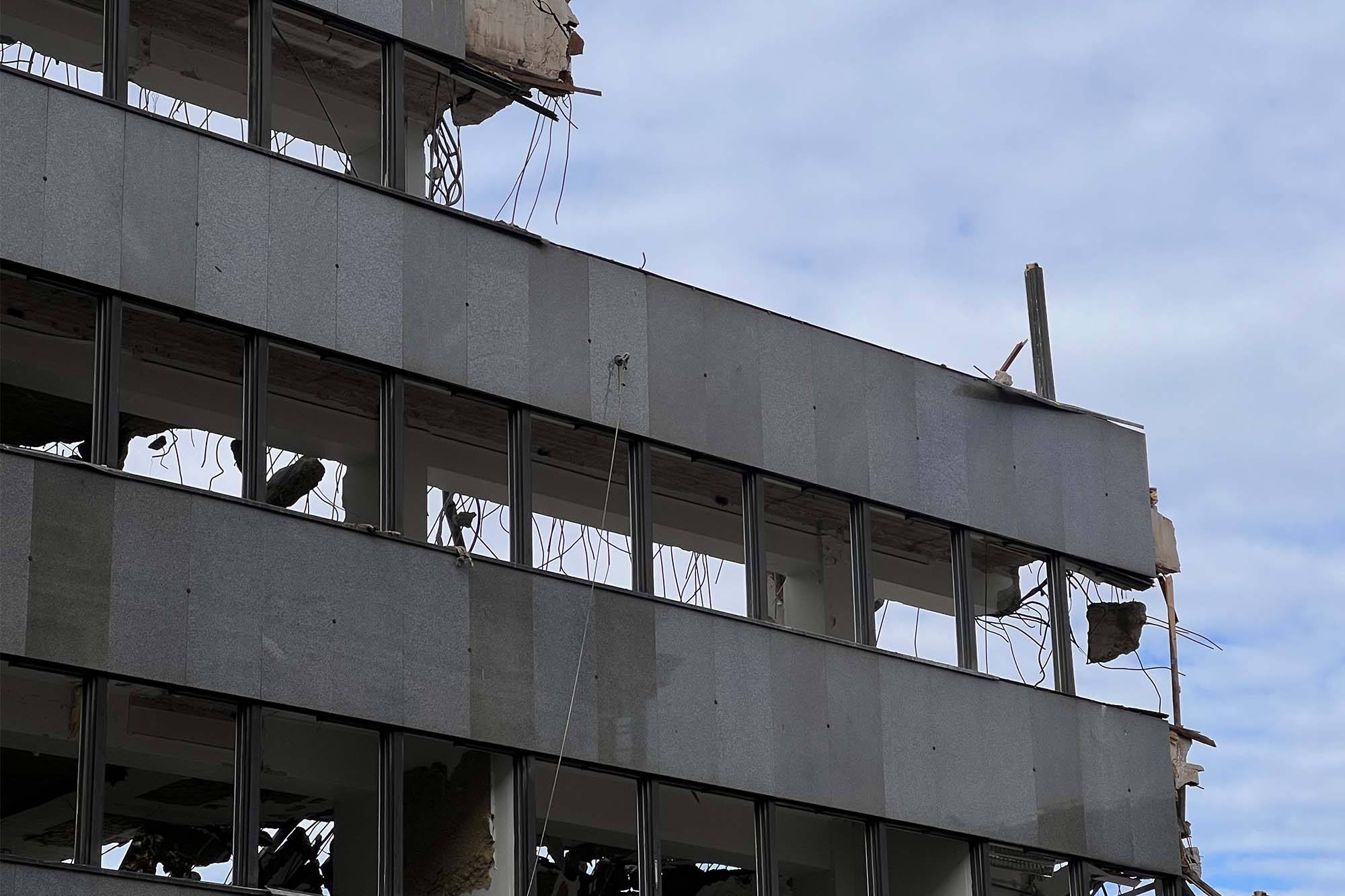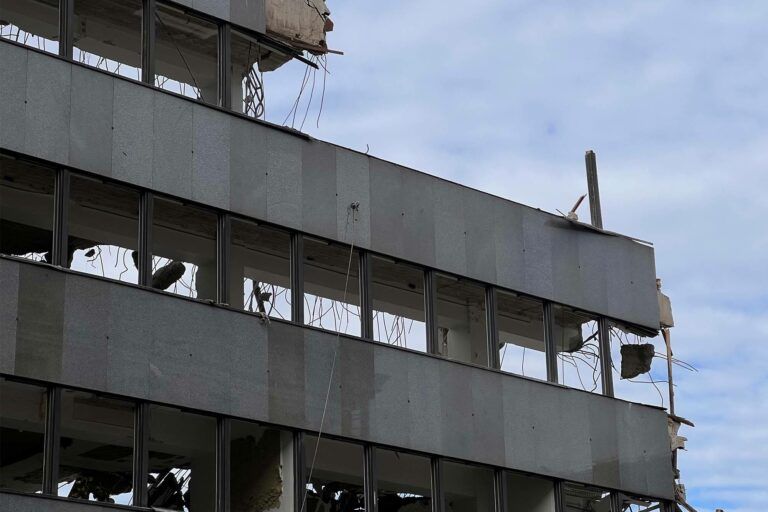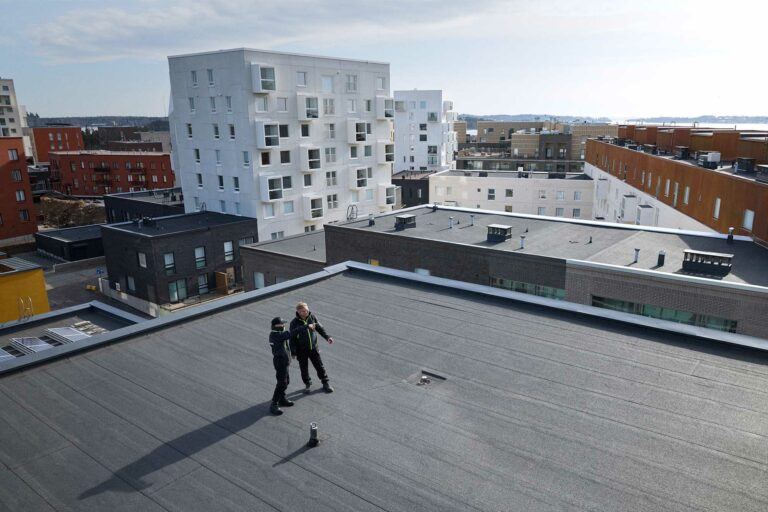Lifecycle Assessment and Insights on the Signe Project in Helsinki’s City Center
Renovating an existing building often results in lower life cycle emissions than constructing a new one. However, sometimes, demolition and new construction can offer greater overall benefits for the environment, building users, and property owners.

Expert Insights on Carbon Footprint Management
The new project at Mannerheimintie 14 in central Helsinki, named Signe, has been a topic of discussion since early 2023. As of spring 2024, the project is in the demolition phase of the old building. In this blog, I’ll explain the importance of life cycle assessment (LCA) in evaluating such projects and share insights on the planning and solutions for Signe from an expert’s perspective on managing the project’s carbon footprint.
How the Low-Carbon Assessment Method Transformed Life Cycle Assessment
Traditionally, LCA standards required emissions to be calculated based on current emission factors over the entire assessment period, without predicting future emission reductions. This meant that during the typical 50-year evaluation period for buildings, energy consumption during use dominated the overall lifecycle carbon footprint.
In 2019, the Ministry of the Environment (YM) introduced a low-carbon assessment method that changed this by establishing national emission scenarios for purchased energy. According to ME’s method, emissions decrease annually in line with international climate policy commitments binding Finland and its energy sector.
While the accuracy of this prediction can be debated, it’s undeniable that significant changes in the energy sector have already substantially reduced the average emission factors for purchased energy. This trend is expected to continue.
Using ME’s assessment method, life cycle emissions comparisons often show that renovation is the lower-carbon option. As purchased energy becomes nearly emission-free in the coming decades, the importance of energy efficiency in the carbon footprint diminishes, while the significance of the embodied carbon increases. If a renovation results in energy efficiency equal to or better than new buildings, renovating is clearly a lower-carbon solution.
Local Differences in District Heating Not Accounted For
The low-carbon assessment method does not consider local differences in district heating. The Ministry aims to ensure building permits do not unfairly treat buildings based on location, so buildings using district heating receive the same final assessment regardless of location. However, this does not always reflect reality
Helsinki historically has one of the most carbon-intensive district heating networks in the country.
National averages do not fully capture the importance of reducing district heating consumption in Helsinki for mitigating climate change. Conversely, Helen (the local energy company) faces a significant challenge in decarbonizing the country’s largest district heating network, which has relied heavily on coal and natural gas for decades.
In Helen’s carbon neutrality goals, every action that reduces consumption significantly aids the capital city’s climate goals, whether through renovating existing buildings for greater energy efficiency or constructing new buildings as energy-efficiently as possible.
Carbon Footprint Management at the Signe Project
When Sponda began carbon footprint management for Mannerheimintie 14, the building required significant interventions, presenting two clear options: comprehensive renovation or demolition and new construction. Guided by Sponda’s ambitious environmental goals, the carbon footprint was a key consideration. The City of Helsinki had also started focusing on life cycle impacts and how the carbon footprint of demolition and new construction compares to renovation.
Sustera was commissioned by Sponda to compare the carbon footprints of new construction and renovation. Preliminary architectural sketches for both options formed the basis for our calculations. In such comparisons, the basic premise is that emissions from building materials are higher for new construction than for renovation, as many heavy structural elements are retained in extensive renovations. However, the operational energy efficiency of old buildings often remains lower than that of new buildings, leading to a higher operational carbon footprint.
Energy Efficiency and Floor Heights Favoured Demolition
The renovation option for Mannerheimintie 14 faced challenges due to poor energy efficiency and unusually low floor heights. Renovation would have required a complete renewal of the building envelope, and low floors would have significantly limited the sizes of ventilation ducts. Achieving the energy efficiency and indoor conditions of new construction would have been impossible even with extensive measures.
Comparisons during the planning phase indicated that demolishing the old building and constructing a new one was a justified solution for climate change mitigation. These comparisons were based on a “baseline” solution for both new construction and renovation, excluding factors like solar panels, which would impact either case equally.
Environmentally Sustainable Choices for the New Building
In developing the new solution, Sponda consistently sought environmentally sustainable choices. We worked closely with the architectural and structural planning teams, comparing various systems from a carbon footprint perspective. Zoning limits on building height added constraints to the dimensions of intermediate floors and structural beams, resulting in the new building having one less floor than the old one.
For office construction, common structural solutions include hollow-core slab intermediate floors supported by columns and beams of precast concrete, steel, or steel-concrete composite structures. We also considered wooden intermediate floors and cast-in-place structural solutions. Ultimately, the cast-in-place column-slab structure was selected as the best solution for feasibility and carbon footprint, avoiding carbon intensive steel structures entirely.
This solution provided excellent building flexibility, with sufficiently large column spans and no high beams limiting space divisions or building services.
While wooden structures are often the lowest-carbon option, the overall solution matters: if wooden intermediate floors require heavy steel beams, the result is far from carbon-neutral. Similarly, all-wood column-beam systems would have been spatially unfeasible due to strict height requirements. The cast-in-place concrete structure proved to be the best low-carbon option for this project.
Considering Carbon Footprint Throughout the Project, Including Material Choices
The carbon footprint is managed in other aspects of the project, supporting design decisions. For example, natural stone was chosen for the facade as it is a high-quality, long-lasting material with a lower carbon footprint than fired brick. Reusing granite slabs from the demolished building for rooftop terraces and retaining the civil defence shelter structures also reduces the need for new materials.
In terms of energy solutions, Signe is an efficient A-class energy building, thoroughly exploring various possibilities for utilizing waste heat sources. Carbon footprint considerations continue to guide the project throughout detailed design and construction, including procurement and material choices.
Emissions Per Square Meter Don’t Reflect the Quality or Usability of Spaces
In lifecycle assessment, emissions per square meter are a key indicator. Viewed this way, the Signe building, to be completed in 2026, is exceptionally low carbon among office buildings.
However, focusing solely on the kgCO2e/m² figure does not reveal anything about the usability and quality of the spaces. One interesting metric is that the space efficiency for office areas was significantly improved compared to the old building.
High-quality work environments can be provided for more employees, even though the new building has one less floor. The carbon footprint per employee is significantly lower than it would have been after renovation.
This idea can be extended further to conclude that the carbon footprint per employee for vacant office spaces is infinitely high. It is challenging to say what impact the demolition and new construction at Mannerheimintie 14 will have on a larger scale: will it sufficiently reduce the demand for high-quality office space so that a new construction project elsewhere, perhaps in a location with poorer transport connections, will be avoided?
Building-level life cycle assessment alone does not provide answers to such system-level questions.
Writer

Juhani Huuhtanen
Team leader, low-carbon services
Read also

Lifecycle Assessment and Insights on the Signe Project in Helsinki’s City Center

Raksystems announces rebranding as Sustera Group
